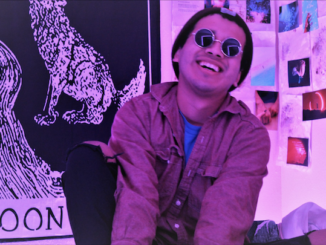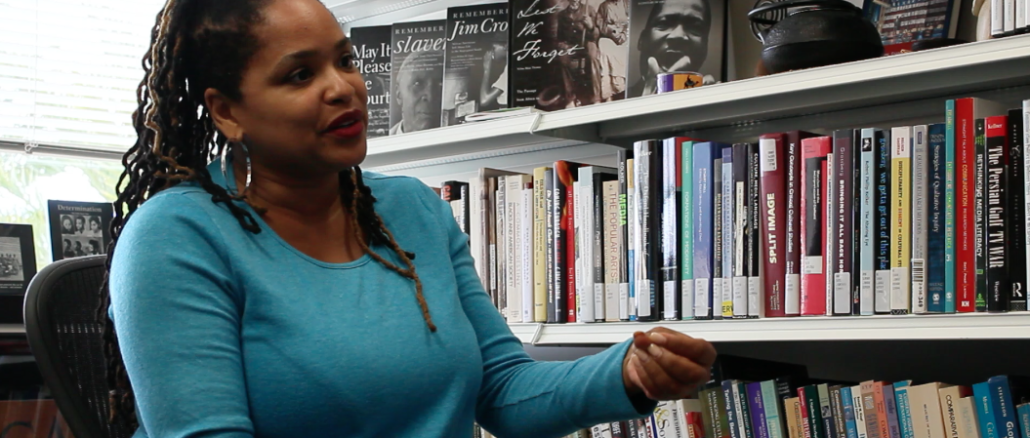
During her first year as a faculty member, Communication Professor Roslyn Satchel was pulled over three times by police just off campus in Malibu.
And it was not because she was speeding or on her phone while driving.
It was due to the color of her skin.
In each case, Satchel said, the first question officers asked was “‘What was I doing here?’”
“I don’t know what would have happened to me because they were not friendly conversations until I mentioned that I taught at Pepperdine,” Satchel said. “Suddenly, that gave me license to be here. I’m real clear that my race and ethnicity have a lot to do with why I was pulled over and why the first question was what was I doing here.”
Satchel works with the local Black Lives Matter movement to address police brutality and violence against black people. Satchel said Black Lives Matter works to raise awareness and combat racial issues through social media and public gatherings.
“It’s a multiple-pronged strategy that is intent on making Black Lives Matter in all contexts,” Satchel said. “When black lives matter, all lives will matter.”
A Pepp Post poll of 52 students found that 75 percent said they support the Black Lives Matter movement. Some 17 percent of students do not support the movement and roughly 8 percent are undecided.
#BlackLivesMatter is more than just a hashtag
Black Lives Matter started in the wake of Trayvon Martin’s death in 2012.
Crime watch coordinator George Zimmerman shot Martin, a 17-year-old black teenager, and then walked after a jury ruled the shooting was an act of self defense, Lizette Alvarez and Cara Buckley wrote in a July 2013 article from The New York Times.
This led Opal Tometi, Patrisse Cullors and Alicia Garza to create the hashtag #BlackLivesMatter on Twitter.
It was not until the fatal police shooting of Michael Brown in 2014 that the hashtag sparked an international movement. Black Lives Matter’s purpose is to raise awareness about injustice and inequality in society, specifically fighting for equal treatment for African Americans in the criminal justice system, and working to reduce anti-black racism, Linda A. Moore wrote in a March 11 article from USA Today Network.
David Humphrey, associate dean of Student Affairs for Diversity and Inclusion, said he believes that Black Lives Matter is bringing important attention to racial issues that existed for a long time.
“I think the mission of Black Lives Matter is to bring and highlight those specific issues that’s specifically related to black and brown bodies who have never been cared for in the history of our country,” Humphrey said.
Satchel works as a volunteer at the Black Lives Matter meetings in Inglewood, California on the second week of every month. During those meetings, Satchel often serves as a mediator and facilitates conversations that are emotional and difficult. She is the team leader for the healing justice team and ministers to families who struggle with the loss of a loved one due to racial and police violence. To strengthen their community, the organization holds memorials and pours libations to honour their ancestors.
“Black Lives Matter is broadly an emotional support system,” Satchel said. “And that is the exciting part of being a part of the community.”
Systemic racism is a part of history
The Black Lives Matter movement is not new but rather a continuation of past movements toward human rights that seek to eliminate enslavement, genocide, torture, gender divides, segregation and any levels of inequality, Satchel said. Over time, it has evolved into an organization that fights for a fundamental reordering in society and to end systemic racism.
Police officers are 21 times more likely to shoot young black men than young white men, Rick Dandes wrote in an Online Paralegal Program article.
And although black males and white males smoke marijuana at the same rate, a black person is 3.73 times more likely to be arrested for marijuana possession than a white person, Peter Katel wrote in a January 8 CQ Researcher article.
“What we’re looking at is what happens when we have history of exclusion and white supremacy that quite honestly taint all of the systems and structures in our society,” Satchel said. “And those systems and structures include law enforcement and also the makings of laws.”
Satchel said a hierarchy for race exists in American society with white people at the top and black people at the bottom.
Historically, this started when whites enslaved blacks, then treated them as less-than citizens under Jim Crow segregation laws, harassing them with fear of lynching, then shifted to imprisoning and harassing blacks through law enforcement in the War on Drugs. Recent books such as Michelle Alexander’s “The New Jim Crow” and Ava DuVernay’s Netflix documentary “13th” have helped highlight these issues.
White supremacy undergirded most American institutions and made some lives matter more, Satchel said.
Student opinions are divided
Many global Black Lives Matter organizers utilize social media in strategic ways to raise awareness against inequalities in the justice system, advance policy initiatives, change public opinion and combat negative stereotypes in mainstream media, Satchel said. The Black Lives Matter community groups usually organize peaceful rallies and community meetings to raise awareness and enable dialogue.
“We all consider ourselves as organizers,” Satchel said. “Our lives do matter. We’ve been crying it, we’ve been chanting it, we’ve been praying it.”
Students who support the movement believe it is bringing awareness of ongoing racial issues into the media.
“It’s bringing light into media as to why black lives should be equal to everyone else,” Christeane Tacadena, a freshman liberal arts major, said. “I think it’s supporting equality.”
Many other students agreed with Tacadena’s opinion.
“I support it because they made events of major issues: Trayvon Martin’s case and Michael Brown’s case,” freshman psychology major Lillian Annan said. “They brought awareness into a national standpoint.”
Freshman theatre major Claire Evans is a white student who also supports the Black Lives Matter movement.
“It can be used to raise awareness of these long occuring issues that are taken to extreme measures,” she said, referring to violence against black people.
Evans is from Kansas City, Kansas and witnessed racial injustice many times in her hometown.
“I’ve seen prejudice when it comes to police officers and African American people in my own city,” Evans said. “Whenever I see somebody pulled over, it’s always a black person no matter what. And I think it’s crazy. It’s absolutely insane considering how many white people live in my area. I know it’s way worse in a lot of other places.”
But not everyone agrees with the movement. People petitioned the White House to deem Black Lives Matter as a terrorist organization and made the “All Lives Matter” and “Blue Lives Matter” hashtags to retaliate against the activist organization, David Smith wrote in a October 2017 The Conversation article.
The reason for the divide on Black Lives Matter is that political sides create misunderstanding about what the organization stands for, said David Holmes, associate dean of Curriculum and General Education and English and African American Studies.
“With the Black Live Matter movement, I think one of the real issues is there’s a gross misunderstanding on what it even is,” Holmes said. “So it’s easy to be against something when all you watch is Fox News and CNN. I think it’s more about a divide that can occur when people misunderstand a movement and more importantly when they misunderstand each other. We’re human no matter what your race is, no matter what your gender is, no matter what your sexual orientation. We bring a horizon of understanding and misunderstanding to every relationship.”
The poll found that 52 percent of students believe that the Black Lives Matter movement is effective, 31 percent are unsure and 17 percent of students believe that it is ineffective. This is a drop in numbers from those who support Black Lives Matter.
Some protests have included destruction of property, Annan said, but otherwise Black Lives Matter has not gone to extreme measures.
Senior psychology major Asa Bailey, the leader for the Black Student Association, sees how people can take the wording of Black Lives Matter wrong.
“[The] purpose of Black Lives Matter isn’t to ignore or discredit all other groups,” Bailey said. “It’s to bring awareness to the fact that black people are being killed and harmed and if justice is not being brought to them then this needs to be addressed.”
Colin Kaepernick’s campaign
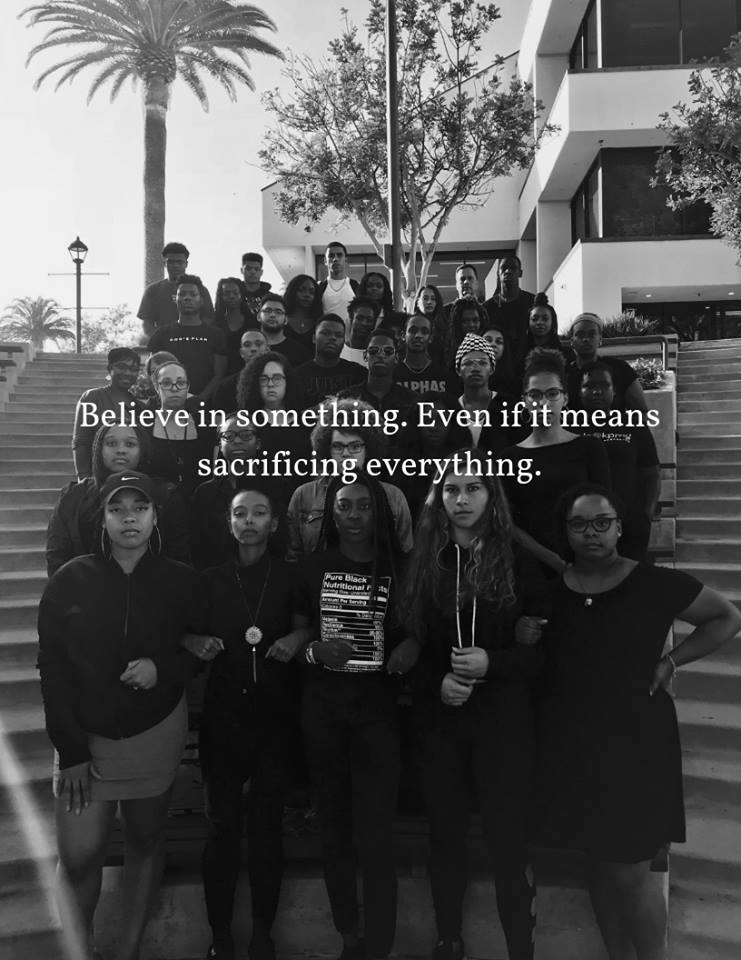
The Black Student Association recreated Nike’s Colin Kaepernick ad campaign in support of Kaepernick and the fight against systemic oppression and state-sanctioned violence (Photo by Pepperdine BSA).
In 2016, former San Francisco 49ers quarterback Colin Kaepernick started taking a knee during the national anthem to protest against police brutality and show his support for the Black Lives Matter movement. It was not until September 2017 when it garnered national attention and sparked moral outrage, including condemnation from President Donald Trump, Megan Garber wrote in a September 2017 The Atlantic article. Some saw Kaepernick as heroic, others saw him as disrespectful and unpatriotic.
Roughly half of students surveyed viewed Kaepernick’s campaign as courageous while 14 percent of students viewed it as unpatriotic and disrespectful. Others were indifferent or unsure.
“I think it’s brave for him to do something like that, especially given the negative feedback that he’s been getting,” Annan said. “It’s all about interpretation and his purpose to protest against police brutality against black communities, not to disrespect veterans. He even asked someone who had once served in the army how to respectfully protest.”
Evans also supported Kaepernick’s campaign to raise awareness.
“I think it is very interesting,” Evans said. “I don’t know too much about it but from what I have heard, I think anyone who believes so much in something has the right to show his avocation for it as long as it does not resort to violence.”
Other students, like Tacadena, believe that there are different methods to express Kaepernick’s free speech.
“I feel that him trying to speak out for equality is really good but he can do it in another way,” Tacadena said. “Because I feel that the kneeling is kind of disrespectful because of flag etiquette and the tradition and honour it holds for our country.”
Jordyn Berry, a junior business administration major, believes that Kaepernick’s campaign could be more than just kneeling.
“I’m not in the position to stay up to date but I think it’s good that he is using his platform to talk about something that people are afraid to talk about on such a public scale,” Berry said. “He really risked it all. But also I worry that kneeling is only as far as it is going to go. Like yes, it is symbolism but will it go anywhere from there? I don’t feel like it’s sparking enough action as much as it could to contribute awareness to BLM. I have not heard much about it lately besides the Nike campaign ad. I’m afraid the kneeling during the anthem will be nothing but just a memory.”
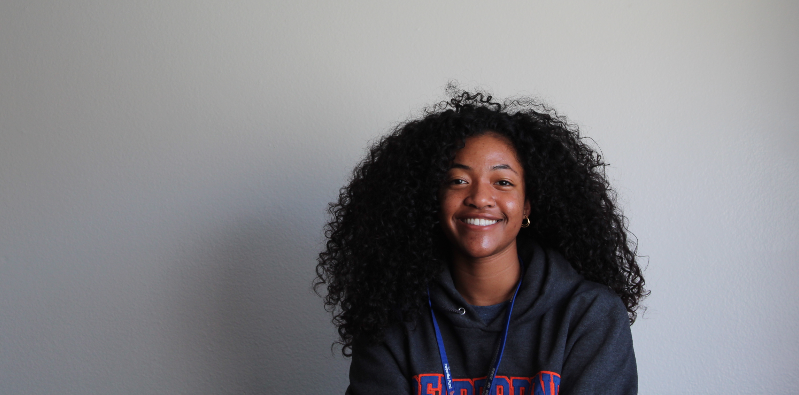
#SayHerName and inclusivity
The Say Her Name hashtag is a part of the Black Lives Matter movement to focus attention on black women who are victims of police brutality. The media overlooks the issue of violence against black women, therefore, the #SayHerName is a crucial role to include gender in the Black Lives Matter movement, Jamilah King wrote in a May 2, 2017 article in Mic
The #SayHerName hashtag went viral in the aftermath of Sandra Bland’s 2015 death in a Texas jail cell, King wrote in a May 2, 2017 article in Mic.
“We don’t use #SayHisName because that is part of the dominant narrative,” Satchel said.
Many students approved how Black Lives Matter is bringing gender inclusion into the spotlight.
“It is a matter of respect to know those people who have died unjustly by law enforcement,” freshman accounting major Michelle Wong said. “I think it’s also great how they are bringing attention to women as well. A lot of people die because of these and the media tends to forget them. I think it is important to remember them and for their situations change the way how we deal them.”
The #SayHerName campaign is important because black woman are able to receive a platform because they are the minority of the minority, Berry said.
“It is difficult because I am woman and I’m black,” Berry said. “I think people overlook the struggle of being a black woman because people don’t see that black woman are struggling physically. They see us to be strong and confident when most of us aren’t. We also get discriminated in the women’s rights movement because not only [do] women get payed less, black women get paid lesser.”
The Black Lives Matter emphasizes inclusivity not just for black females and males, but also for the transgender community, Satchel said.
“It’s really important to recognize the trans community and how they are affected by state sanctioned violence,” Satchel said. “We look at gender more broadly and stand in solidarity with them. Trans Lives Matter is a hashtag we also use.”
Racial profiling in Malibu
Faculty members who are black have encountered racial profiling on and off campus. On top of being pulled over in the community, Satchel said she was racially profiled at Raleigh Runnels Memorial Pool when she was swimming with her son.
“I also had students working at the pool talk to me in a way that they clearly thought that I was a student,” Satchel said. “… And once they understood I was a faculty member they bent over backward to apologize but before that they were rude, they yelled at me and my son. And I refuse to go back to the pool now. Nobody checked me when I walked in but once I got in and I changed and getting ready to get into the pool, all of a sudden I’ve got two to three people coming up to me to ask my ID.”
African Americans often face discriminatory silence, that is, conscious or unconscious negative stereotypes that affect how people treat them, according to an article in The Society Pages.
Satchel said this form of racism is one of the major reasons as to why racial profiling still exists, Satchel said.
Holmes had police profile him when he was leaving the campus after one of his night classes.
“Around Malibu I’ve been pulled over a couple years ago after one of my night classes and so I felt in that particular instance that I was profiled,” Holmes said.
People who are protecting communities and enforcing the law must be careful with singling out certain people, Holmes said.
“We have to be really careful that were not giving special attention, that law enforcement or public safety is not giving special attention to someone because they’re different,” Holmes said. “Not because they are a person of color but because they might look different.”
The poll found that students were split on their perceptions of law enforcement.
Wong does not believe that racial profiling occurs on campus.
“I don’t really know because I just moved here,” Wong said. “But from what I’ve seen I think DPS is doing alright besides housing issues.”
Bailey said she knew of people who had an interaction with DPS where they asked students to show their ID to prove that they were students.
“I know of students who have had an interaction with DPS that they feel haven’t been equal across the board for other students,” Bailey said. “I’ve spoken personally with the director of Public Safety so I know that that is something they are working towards and that there is more they can improve. I believe that there can be more that DPS can do by getting to know the Pepperdine community more so that students don’t feel that they have to constantly prove themselves. So that they can feel safe coming to DPS about issues that they have without fearing there being some questions about the authenticity of the situation that they’re in.”
Bailey believes she is physically safe on campus but there were incidents in the past at Pepperdine, such as the Yik Yak incident in 2015, where she felt psychologically threatened.
“Sometimes we’ve had an event and people have come into those events to do something to make us feel uncomfortable or more unwelcomed even if it was just game night,” Bailey said. “As far as emotionally safe or psychologically safe, I think that wavers just because there has been incidents on campus where students have threatened the identity of black students on campus or students of color on campus.”
Racial profiling also happens in subtle ways. Berry gets asked most of the time if she is either a student athlete or a first-generation student on campus.
“The assumption is made that if you’re black and on campus you’re either here for athletics or first-gen because tuition is expensive,” Berry said. “A lot of the people here don’t come from diverse backgrounds. Lack of diversity where they are from makes it easy to assume stereotypes.”
“Microaggression is definitely prevalent [in campus],” Bailey said.
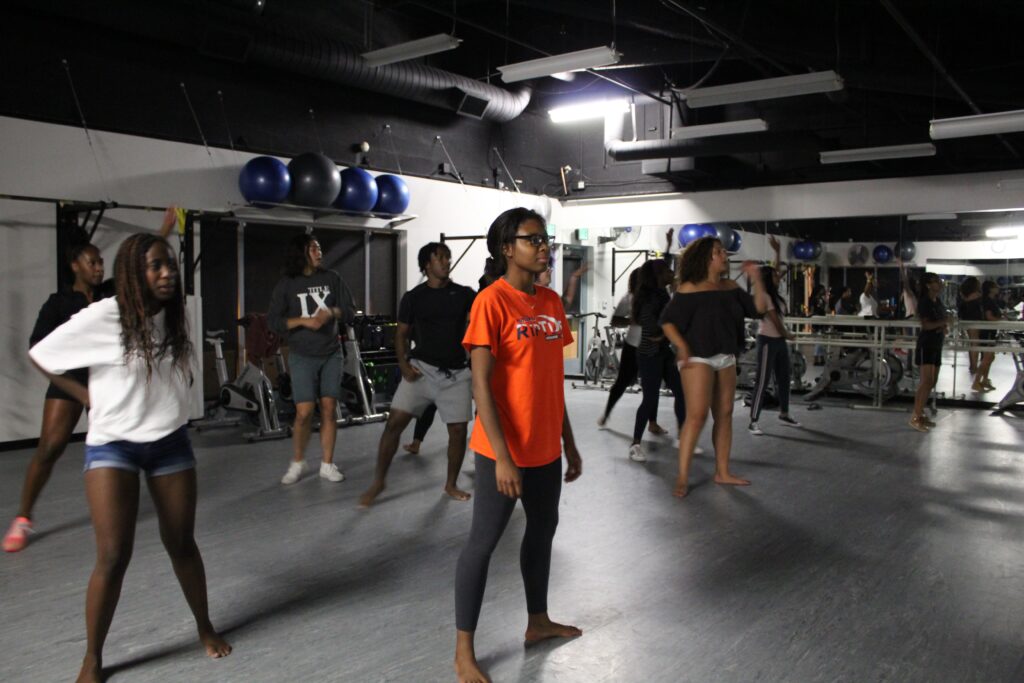
Diversity training
Although historically white and politically conservative, Pepperdine has strived to welcome diverse groups. But the community believes that there are more changes needed to accommodate these diverse groups.
“We need to figure out a way, all of us, to create a community,” Holmes said.
Pepperdine remains a diverse campus. In 2017-2018, the Office of International Effectiveness reported that more than half of the population is ethnically diverse while faculty diversity increased slightly.
Most students aren’t trained, however, to interact with students from diverse backgrounds.
The poll found that only 35 percent of students surveyed received diversity training covering race at Pepperdine.
First-year students are trained on Title IX sexual harassment and gender inequality regulations. However, students like Rodelle Benitoe, freshman computer science major, believe gender is not the only topic students should learn.
“There is always more to be done to increase inclusivity, especially for race issues,” Benitoe said. “I feel like we should have education to let others know what may be offensive to a race.”
As a former resident advisor, Bailey received diversity and inclusion training for minorities. But she has not received any other official training regarding cultural diversity.
“Just attending any intercultural events or dean’s lecture that stem about diversity and inclusion,” Bailey said. “But other than that I received no official training besides being a resident advisor.”
Many students and faculty member agreed that there is more Pepperdine could do to accomodate people of color.
“I think we have to have some policies in place that require that all students are treated fairly,” Satchel said. “Equitable treatment is a basic element necessary for any institutions.”
Some students want the administration to make diversity and inclusivity a requirement in general education courses. The Pepp Post poll found that 83 percent believe that there should be a required diversity training as a part of undergraduate education while 17 percent disagree.
“Trying to implement a general education course on diversity and cultural competency should be a way to improve our campus on diversity,” Bailey said. “Having a training like that should be mandatory across all forms.”
Some students think there should be regular diversity training for first-year students upon arrival to campus.
“Just a small group lecture,” Tacadena said. “I think that would be good.”
However, there is no proposal yet to include ethnic diversity education and to make this a course involves a long process and multiple committees, Holmes said.
“A course does not appear out of thin air,” Holmes said.
Pepperdine faculty are working to improve their own competency. The SEED program, otherwise known as Seeking Educational Equity and Diversity, is a peer-led diversity training program working to train faculty and staff members about race, gender, class and orientation.
The program is created to accommodate and help people of color at Pepperdine, Humphrey said.
Around a third of the faculty have gone through the SEED program.
“Pepperdine has made great strides,” Holmes said. “It seems to me that Pepperdine could do more. And Pepperdine recognizes that it could do more.”
Kathrine Chan completed the reporting for this story under the supervision of Dr. Christina Littlefield and Dr. Theresa de los Santos in Jour 241 in fall 2018. Dr. Littlefield supervised the web story.


